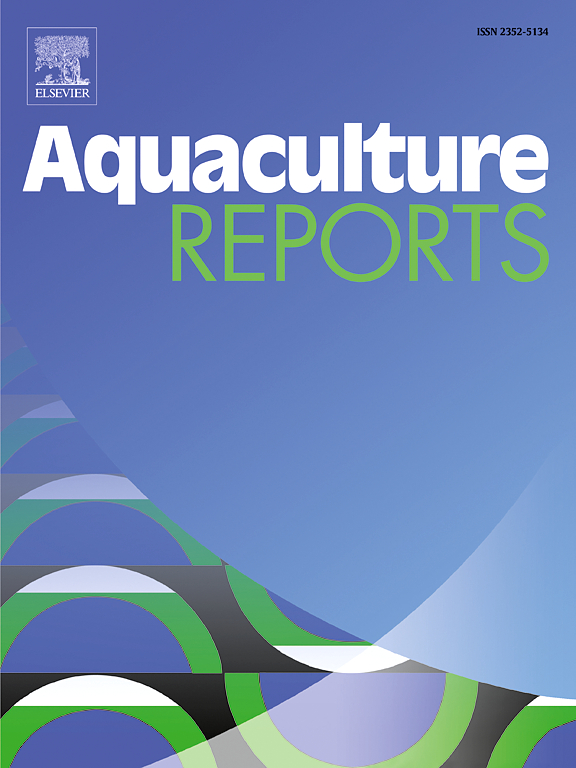Optimisation of controlled reproduction protocol in broadhead catfish (Clarias macrocephalus Günther, 1864) using Ovopel™: Effect of different hormonal treatment methods on reproductive traits
IF 3.2
2区 农林科学
Q1 FISHERIES
引用次数: 0
Abstract
This study aims to establish novel protocols for hormonal delivery methods and dosages of Ovopel™ (D-Ala6, Pro9 NEt-mGnRH plus metoclopramide) for spawning induction of female broadhead catfish (Clarias macrocephalus) in control conditions. A total of 84 female breeders (238.63 ± 46.98 g) were placed equally into 12 treatments, 7 fish per treatment. The specimens were managed as intramuscular injection (IM), intraperitoneal injection (IP), or ovarian lavage injection (OI). Hormonal induction of ovulation was carried out as follows: three hormonal delivery methods (IM, IP, or OI) in combination with three doses of Ovopel™ (0.5, 1, or 1.5 pellet kg ̶ 1 BW), respectively; the nine treated groups were defined as IM-0.5, IM-1, IM-1.5, IP-0.5, IP-1, IP-1.5, OI-0.5, OI-1, and OI-1.5, respectively. The present results reported that no fish ovulated in the control groups (0.9 % NaCl solution treatments; C-IM, C-IP, and C-OI). In hormone-induced groups, 71.43–100 % of fish ovulated, but no differences were observed in ovulation rates (P > 0.05). The mean latency periods (LT, hours: minutes) indicated significant differences among treated groups (P < 0.05); there was the shortest time in treatment OI-1.5 (7:19 ± 1:04, hours: minutes) and IP-1.5 (7:58 ± 1:01, hours: minutes). The values viz. pseudo-gonadosomatic index (PGSI, %), fertilisation rate (FR, %), hatching rate (HR, %), and survival rate (SR, %) showed considerable individual changes among treatments; nevertheless, there was no statistically significant difference between these average parameters of treated batches (P > 0.05). Taking into account hormone doses (economical consideration) as well as invasive and less-invasive hormone administration, the 0.5-pellet Ovopel™ ovarian lavage treatment is recommended for artificial propagation of C. macrocephalus.
求助全文
约1分钟内获得全文
求助全文
来源期刊

Aquaculture Reports
Agricultural and Biological Sciences-Animal Science and Zoology
CiteScore
5.90
自引率
8.10%
发文量
469
审稿时长
77 days
期刊介绍:
Aquaculture Reports will publish original research papers and reviews documenting outstanding science with a regional context and focus, answering the need for high quality information on novel species, systems and regions in emerging areas of aquaculture research and development, such as integrated multi-trophic aquaculture, urban aquaculture, ornamental, unfed aquaculture, offshore aquaculture and others. Papers having industry research as priority and encompassing product development research or current industry practice are encouraged.
 求助内容:
求助内容: 应助结果提醒方式:
应助结果提醒方式:


